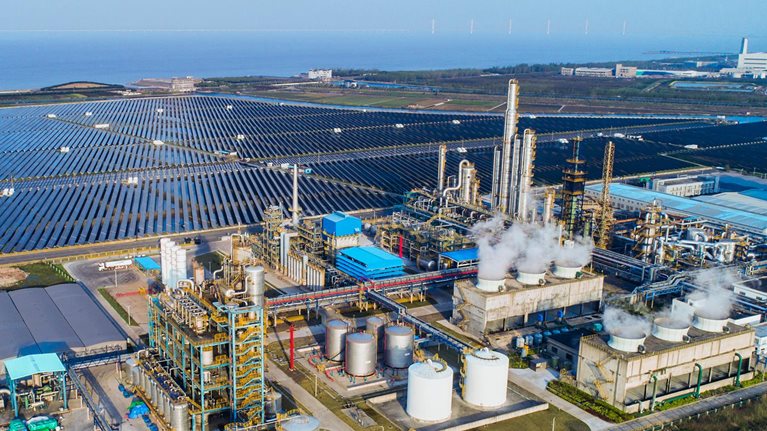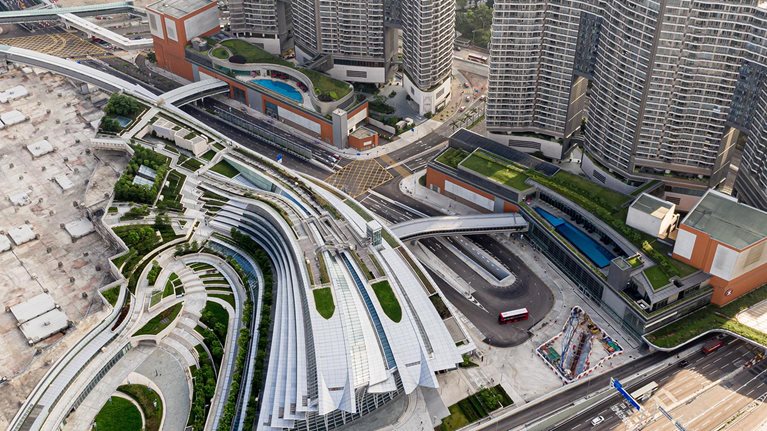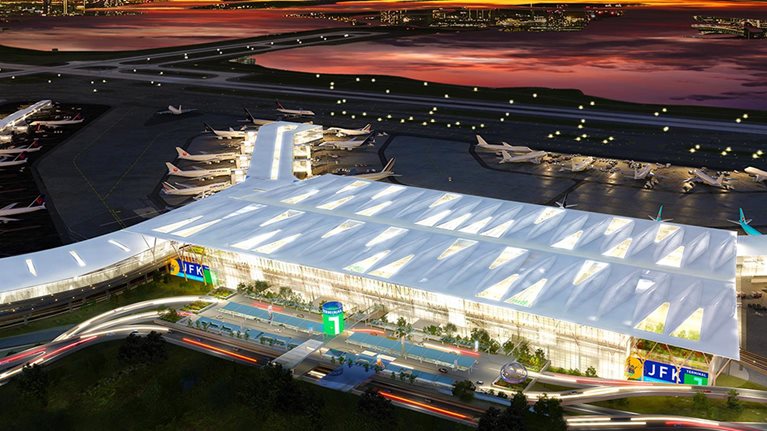In the United States, the Infrastructure Investment and Jobs Act presents an unprecedented opportunity to invest in the country’s transportations systems, while in emerging markets, such as Africa, strong demand for new transportation infrastructure continues to drive investment. At the same time, evolving net-zero climate targets and other sustainability criteria require industry leaders to account for a number of factors when making decisions. Navigating the path toward positive growth and social impact will likely mean expanding organizational capacity and staying abreast of new financing and delivery models.
To learn more about investing in the future of infrastructure, McKinsey’s Tony Hansen spoke with Kim Fejfer, managing partner and CEO of A.P. Moller Capital, and Stephanie Wiggins, CEO of Los Angeles Metro.
McKinsey: What excites you most about what the infrastructure industry can accomplish over the next generation with this global infrastructure-investment scale-up?
Stephanie Wiggins: As the leader of a transportation agency with a core mission of providing equitable mobility options to the residents of Los Angeles County, what excites me most is the opportunity to make real improvements in the mobility options we provide our customers. LA Metro has one of the most ambitious infrastructure-improvement programs in the nation.
This is made possible through tax measures approved by the voters that allocate two cents of every dollar spent in Los Angeles County to transportation projects in our region. Despite what some might see as a tax-revenue windfall, our existing funding streams are still not enough to tackle the root mobility and equity challenges in Los Angeles. We look at the US infrastructure stimulus as a way for the federal government to assist in augmenting our existing funding streams. This is necessary so we can complete these needed mobility projects and provide a world-class transportation system to the residents of Los Angeles County.
Kim Fejfer: In emerging markets in general, and in Africa in particular, the demand for new infrastructure has been and remains strong. The key there is less the supply of capital and more the way government and private players structure the projects. What I find exciting is the overall and seemingly unstoppable growth in volumes. From power demand to goods transported, the volume of infrastructure development in Africa is growing exponentially. COVID-19 has created a bump in the road, but African economies have been, in general, relatively little affected—meaning infrastructure development is going strong.
This growth means different, but positive, things for investors, governments, and customers alike. For the investor, it makes infrastructure projects more economical. Growth also allows for a cushion against inherent volatility in emerging markets. While financial and credit metrics can look tight in the early years of an investment, they tend to improve significantly over time with the growth in volume. This gives comfort to equity investors. For the government and the customers, the growth in supply volumes typically translates to more affordable services in the long run.
The affordability of infrastructure services also tends to improve over time for another reason. In the power sector, when investing in a new, more efficient power plant, you can supplement or even replace the existing, typically less efficient power plants. Doing so tends to drive power prices lower or at least limit the inflation of fossil-fuel prices.
In emerging markets in particular, new infrastructure can make a huge impact with important ripple effects. A new power plant reduces the risk of power outages. Refurbishing a port reduces the transportation time for shipping lines and their clients. Infrastructure supports businesses, making it cheaper and easier to carry out their manufacturing and trading activities. By doing so, you also create jobs, both directly and indirectly. You can do good while doing well.
McKinsey: How can infrastructure leaders best integrate the net-zero climate targets—and other sustainability criteria—into the infrastructure project pipelines?
Stephanie Wiggins: I believe owners should look at the typical life cycle of infrastructure development and incorporate sustainability at the beginning of the planning process. Integrating net-zero targets requires both careful planning during design and construction, and ensuring continued achievement of the benefits of those strategies during the operations and maintenance of the infrastructure throughout its life.
They should also think about the liabilities associated with the consequences of doing nothing about climate mitigation, especially in vulnerable communities.
Another consideration is that many of these net-zero solutions are planned with only local impacts in mind. For example, a zero-emissions bus program may significantly reduce [greenhouse-gas] emissions and criteria air pollutants in one community, but if the sources of the electricity are coal-powered plants, is the net benefit to society really net-zero emissions?
We must also continually facilitate a pipeline of professionals who will think about, advocate for, and execute on net-zero emissions. This can start by integrating the principles of sustainability in what our children learn in school and in what colleges and universities are teaching to prepare the new generation of professionals. Climate-change responses are not the exclusive purview of STEM professionals; they also involve economists, social scientists, and others who do not traditionally engage in the climate conversation.
Kim Fejfer: We have to rethink up front which projects will be able to deliver this net-zero climate target, particularly for power projects. Some projects simply have to be taken off our pipeline.
In the power-generation sector, when you consider building a power plant that will provide baseload power (with a reliable output), there can be a dilemma between the social impact and the environmental impact. Wind farms and solar panels have an intermittent production pattern by nature. Power-plant options to generate baseload power can be rather limited, and they usually generate carbon emissions.
This dilemma is particularly acute in Africa. According to the World Bank, the total electricity generation capacity in Africa, with a total population of nearly one billion, is less than 100 gigawatts.1 This is smaller than the total generation capacity in Spain, with its population of 46 million.
To offset our carbon footprint, we typically consider reforestation in deforested areas. Carbon-capture technologies are also available, and we hope they will become more cost-effective over time.

Voices on Infrastructure: Improving project development and delivery
McKinsey: What steps do owners, investors, and contractors need to take now to develop the organizational capacity to deliver on the anticipated projects coming out of the stimulus?
Stephanie Wiggins: The single biggest challenge, or opportunity, I see in the transportation infrastructure space is the availability of the types of technical and management personnel needed to deliver these complex projects on the owner, designer, and contractor sides. Our annual construction budget is around $3 billion, and it will go up to around $5 billion by 2026. Meanwhile, some economists are forecasting qualified-personnel shortages. This is not a sustainable situation for my agency or any of our delivery partners, and we must continue to focus on growing our workforce to accommodate the increased spending.
Here at LA Metro, we are focused on education, internships, entry-level programs, job training, small businesses, mentor and protégé programs, succession planning—you name it and we have a program for it. But we also must address the engineering and construction trades part of the business. We need all kinds of skilled trades—train-control engineers, geologists, tunnel miners, track workers—to deliver on transportation infrastructure. As an industry, we all must focus on developing skilled talent.
Kim Fejfer: In emerging markets, delivering a project requires getting involved with the stakeholders at the development stage. That’s because capital is often plentiful, but there are not many existing assets and it is hard to generate bankable projects. To achieve this, you need to be on the ground and to work with stakeholders at a relatively early stage. You also need a strong network of stakeholders. These individuals often combine strong sector experience and deep knowledge about certain transportation markets in certain geographies—the best transport corridors, the best opportunities to invest in, and so forth.
McKinsey: What new financing and delivery models can be applied to access funding and quickly put it to work on priority projects?
Kim Fejfer: A well-structured greenfield project will likely get financing, either from international institutions or from local lenders. Projects that are well balanced from an economic and risk-sharing standpoint can wield their compliance with standards—such as the UN Global Compact (UNGC), the PRI (UN Principles for Responsible Investment), and the IFC Environmental and Social Performance Standards to help to secure financing. By addressing these issues at an early stage of the project, the process with the lenders is easier and faster.
Stephanie Wiggins: At LA Metro, we are pursuing numerous delivery models to supplement our funding streams and move projects quicker into and out of the pipeline. For example, we are using a P3 (public–private partnership) model with project development agreements on our Sepulveda Transit Corridor project, using a traditional P3 approach on our West Santa Ana Branch project, and exploring federal TIFIA (Transportation Infrastructure Finance and Innovation Act) loans for our ExpressLanes program. We are also pursuing alternative project delivery to improve our partnerships with contractors and build the capacity required to build these critical projects.
McKinsey: How can the public and private sectors collaborate better to streamline and speed up the permitting process?
Kim Fejfer: First, both the public and private stakeholders would benefit from realistic assumptions up front in terms of costs, returns, social impact, timing, and risk sharing. The existence of a [P3] framework also helps, as well as the experience of all stakeholders in implementing such a framework. An early review of the project by developers or investors helps to address their concerns, and change the design if necessary.
In certain emerging markets, the land acquisition process can also be quite difficult and lengthy. In these areas, the process is streamlined when the land where the infrastructure would get built is already owned by the state.
The interest of private investors can also be piqued when states or international institutions, such as development banks, finance the feasibility studies and early-stage development costs, because this shortens the period between investors getting involved and the project’s financial close.
Last but not least, it is important to have strong relationships with governments and local partners, which are true relationships of trust. If governments know that their partners can deliver a new port, rail, or road because they have already delivered a project in that country, it will for sure help the relationship’s dynamics.
Stephanie Wiggins: Projects of this complexity and magnitude take much more than a willing owner and skilled contractors. It takes partnership with numerous stakeholders and third parties, such as water and power companies, city engineering departments, and state and federal regulatory agencies.
First, we need to strengthen our partnerships with all our third parties and regulatory agencies to speed up the permitting process. This starts with reviewing our culture internally to ensure that we are structured in a way to optimize relationships with third parties. To this end, we recently stood up a new delivery unit at Metro focused on alternative delivery methods. Alternative delivery methods and qualifications-based contractor selections will allow us to truly partner with private industry and develop projects and pricing using the best teams, shared-risk strategies, and transparent partnership with shared goals.
We also need to plan these projects from an early stage using an equity lens and make sure our expectations and goals for the projects are in line with the desired results for the affected communities the projects are in. The permitting process for transportation projects is always more efficient when they are planned correctly and enjoy the strong support of the communities we serve. True partnership and shared vision with the cities we serve and work within are absolutely critical to delivering on our current program—not to mention making the best use of the future infrastructure funding on the horizon.
Comments and opinions expressed by interviewees are their own and do not represent or reflect the opinions, policies, or positions of McKinsey & Company or have its endorsement.


